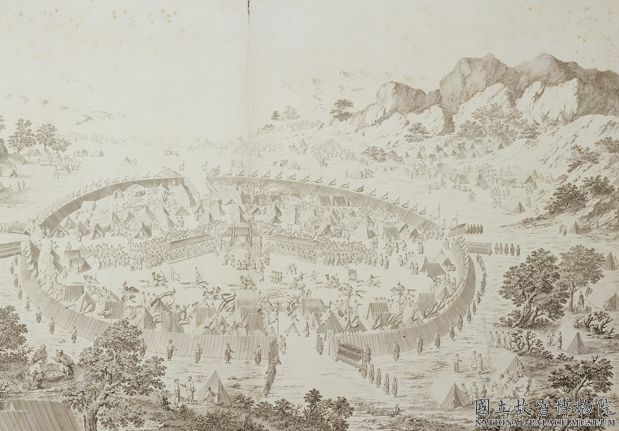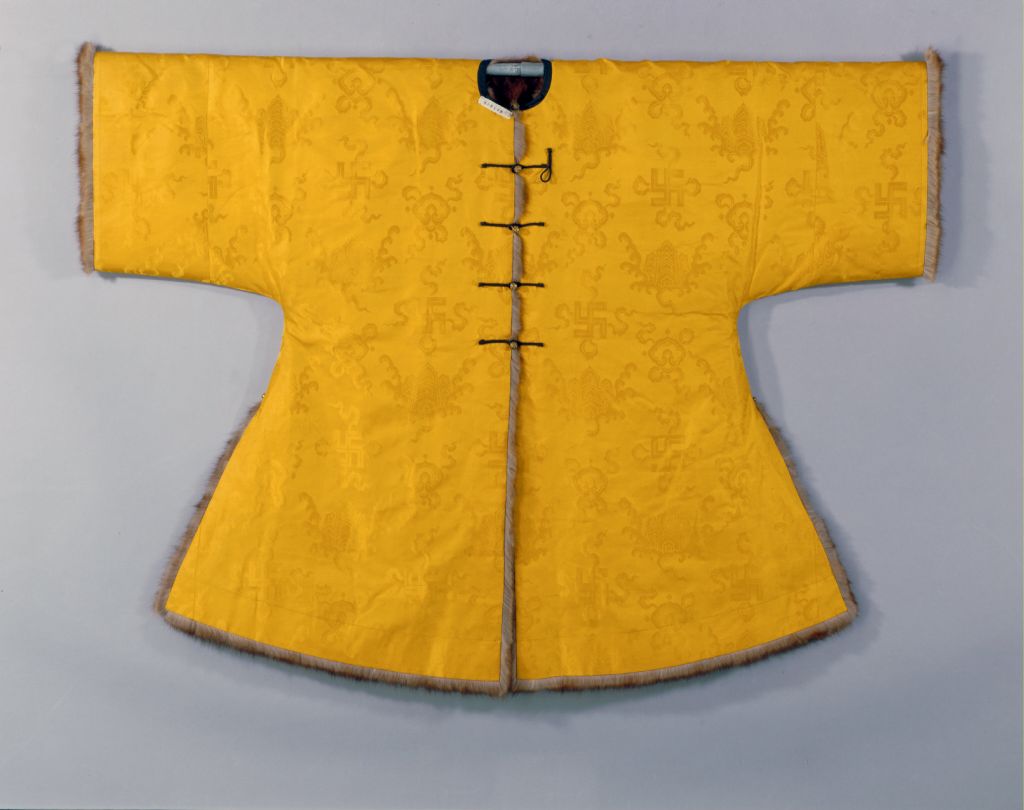[Light Camel Ocean Pattern Makeup Satin]
Light Camel Ocean Pattern Makeup Satin, late Qing Dynasty (late 19th century), with a width of 62 centimeters and a total length of 585 centimeters. The old collection of the Qing Palace
This volume of material is complete and has not been cut. In its satin weave, the warp thread is made of light yellow silk, the weft thread is made of light yellow silk as the ground weft, and the leaf green and magenta silk are used as the weave weft. According to the pattern design, the flower appears. At the same time, in conjunction with the Tongsuo colored weft, gold and silver threads, as well as silk threads in colors such as water red, light pink, flesh color, grass green, stone blue, light blue, and snow green, are used to dig flower trays and weave, demonstrating the luxurious, rich, and magnificent style of the makeup flower process with exquisite weaving standards
The makeup satin machine head is woven with the factory’s trademark pattern and style:“ фабрика А. и В. Сапожниковыхъ. Москва”, On the back, there is a blue stamp with the national emblem of the Russian double-headed eagle, as well as a “72298” digital blue stamp. This gold and silver makeup brocade was woven from a very prestigious factory in Moscow at that time, which often accepted orders from monks, nobles, and the court. Since 1870, the factory has been under the control of two brothers, Alexander and Vladimir. Due to their excellent textiles, it has also received the honor of placing the national emblem on family signs. In the second half of the 19th century, the Russian textile industry rose and began to compete with European countries for the Chinese market. During the Qing Dynasty, official and civilian merchants conducted perennial trade with Russian merchants through Zhangjiakou and Kulun in Chiaktu, which was at its peak. Russian products such as gold brocade, woolen cloth, “back down”, and “back cloth” spread throughout northern China and entered the imperial life of the Manchu and Qing dynasties
![图片[1]-Light Camel Ocean Pattern Makeup Satin-China Archive](https://chinaarchive.net/Warring States period/tapestry and embroidery/15084892348883.jpg)

![[Qing Dynasty] British female painter—Elizabeth Keith, using woodblock prints to record China from the late Qing Dynasty to the early Republic of China—1915-China Archive](https://chinaarchive.net/wp-content/uploads/2022/11/image-191x300.png)



